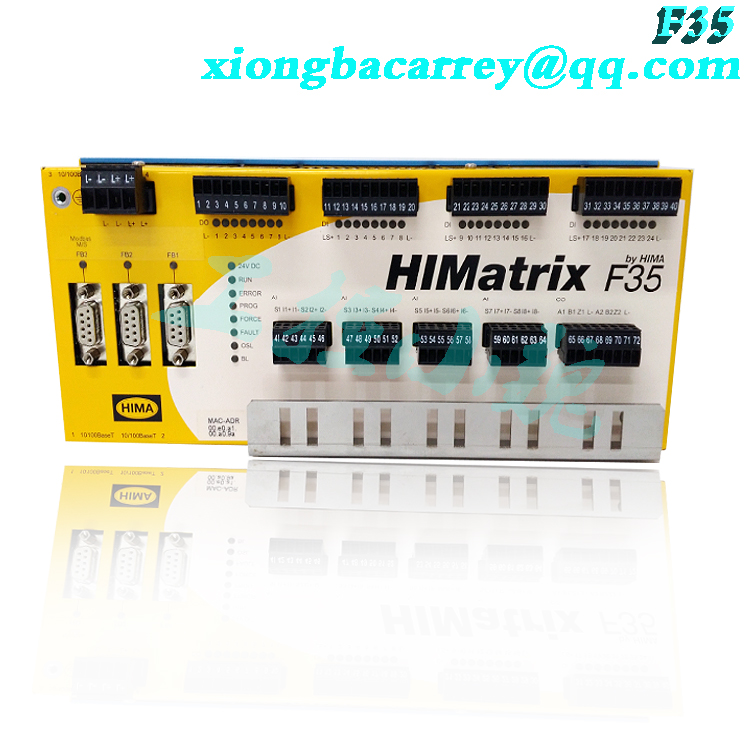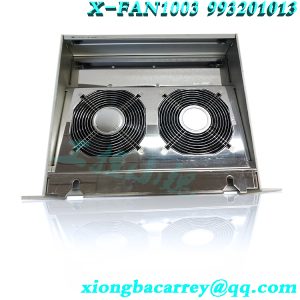Description
The safety related F35 controller is a compact system located in a metal casing, with 24 digital inputs, 8 digital outputs, 2 counters, and 8 analog inputs. This controller can be used in three model variants of SILworX and three model variants for ELOP II Factory, please refer to Chapter 3.2. All variants are described in this manual. This device is suitable for installation in Ex zone 2, please refer to Chapter 4.1.5. This device has been certified for safety related applications up to SIL 3 (IEC 61508, IEC 61511, and IEC 62061), Cat 4 (EN 954-1) and PL e (EN ISO 13849-1). The certificates provided on the HIMA website specify more security standards, application standards, and testing standards. In a control system, not only the controller, but also the controlled object, measuring components, transmitters, and actuators have their respective directions of action. If they are not properly combined, so that the overall direction of action constitutes positive feedback, the control system can not control, but destroy the stability of the production process. So before the system is put into operation, it is necessary to pay attention to checking the direction of action of each link, with the aim of ensuring that the entire control system is a closed-loop system with negative feedback by changing the positive and negative effects of the controller. The so-called direction of action refers to the direction of output change after the input changes. Fault tolerant controllers (FTCs) have recently received considerable attention as they play an important role in maintaining modern technology system security through configuration redundancy. This article introduces the foundation of FTC by analyzing the requirements of safety critical systems. The development of passive FTC methods based on safety requirements was discussed, including their advantages and disadvantages. Closely related to safety related issues, the latest developments in active FTC design methods are reviewed in the order of fault detection and diagnosis (FDD), reconfigurable control, and the integration of FDD and reconstruction. In summary, this article believes that addressing security issues is the key to the further development of FTC.
The current trend towards greater complexity and automation has made modern technological systems increasingly prone to malfunctions. If appropriate measures are not taken, even small mistakes can lead to destructive consequences. To ensure the safety of the entire system, the fault-tolerant controller (FTC) aims to maintain safe operating limitations and mitigate the impact of system/component failures. In other words, FTC can prevent small faults from developing into major problems.
Before designing any FTC, fault analysis and redundant configuration must be conducted. According to the book (Blanke, Kinnaert, Lunze, and Staroswiecki, 2006), a failure mode refers to the way something may malfunction, including potential errors that may occur, especially those that may affect the factory or operator. In order to cover as many failure modes as possible, the standard practice is to conduct failure mode and impact analysis (FMEA), fault tree analysis (FTA) and event tree analysis (ETA) for safety critical systems (Stamatis, 2003) These analyses have achieved the following goals: (1) to obtain the causes and consequences of potential faults; (2) Able to estimate and classify the impact of potential faults; (3) It can promote the design of fault detection and diagnosis (FDD) and fault-tolerant strategies. After failure mode analysis, it is necessary to study the structural characteristics of the dynamic system, which is called structural analysis (Blanke et al., 2006). The analysis of the system structure diagram and its specification decomposition can identify the components to be monitored, the possibility of design residuals to meet FDD specifications, and the existence of reconstruction possibilities. As a result, system redundancy can be established based on structural analysis. The possibility of designing residuals to meet FDD specifications, as well as the possibility of reconfiguration. As a result, system redundancy can be established based on structural analysis. The possibility of designing residuals to meet FDD specifications, as well as the possibility of reconfiguration. As a result, system redundancy can be established based on structural analysis.
Popular model recommendations:



.jpg)




Luigi Vogle –
Thank you, I have recently been searching for information about this subject for ages and yours is the greatest I have discovered so far. But, what about the conclusion? Are you sure about the source?
Stepanie Deblieck –
Hi there, You have done an incredible job. I’ll certainly digg it and in my view recommend to my friends. I’m confident they’ll be benefited from this website.